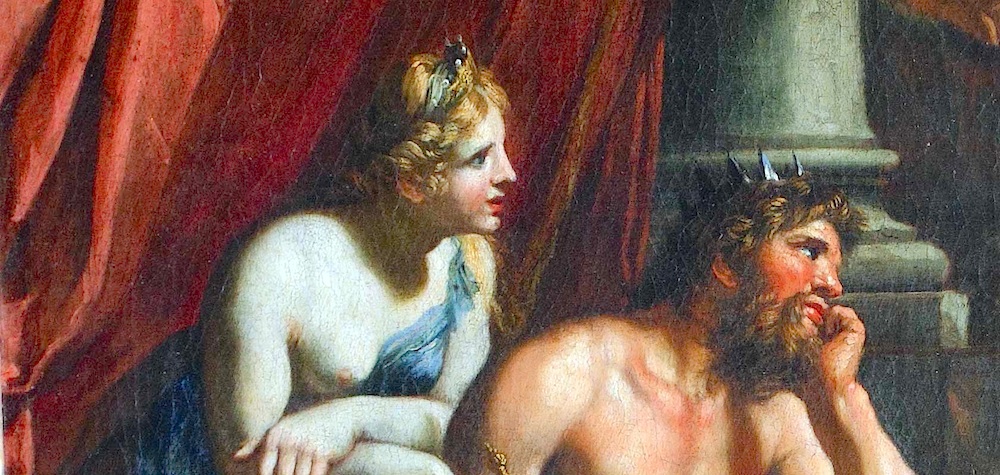La descente d'Orphée aux enfers + Les Arts Florissants
M.-A. Charpentier
The Descent of Orpheus to the Underworld
It was in 1686, a year before the death of Jean-Baptiste Lully who had forbidden his contemporaries to compose operas, that Marc-Antoine Charpentier (1643 - 1704), still working for Mademoiselle de Guise, composed his opera: The Descent of Orpheus to the Underworld. Even though Marc-Antoine Charpentier was mainly known for his religious music, at 43 he had also composed many secular works such as The Pleasures of Versailles (les plaisirs de versailles), The Flourishing arts (Les Arts florissants) and The Loves of Assis and Galatea (Les Amours d'Assis et Galatée) which is unfortunately lost.
The Descent of Orpheus in the Underworld is an atypical work that is composed of two acts only and ends when Pluto allowing Orpheus to step into hell to save Eurydice. It is therefore one of the only musical works around the ancient myth of Orpheus having a happy ending! The opera ends with a magnificent saraband, called « entrée des fantômes » (entry of ghosts) which, in the joyful and brilliant tone of D major invites us to meditation and happiness. Today we consider the work incomplete, or that its last part has been lost.
The second particularity of the work lies in the suggested instrumentation for Orpheus' arias. In each of his interventions, it is accompanied by two viola da gamba and a basso continuo. While Claudio Monteverdi's Orfeo accompanied Orpheus and Pluto's encounter with a famous harp solo, Charpentier's opera depicted Orpheus' lyre as two viola da gamba. Three beautiful complaints reveal Orpheus imploring the mercy of hell to try and be reunited with his tender Eurydice who is beyond the Styx since she was bitten by a snake.
The work also differs from the composer's others operas by its intimacy. The piece was composed to be performed in the apartments of Mademoiselle de Guise as is suggested by the didascalies (indications of the author) present in the manuscript. Charpentier may have had the opportunity to perform the piece but with limited means. This is undoubtedly one of the reasons for the intimate setting of the work and the small group of musicians rather than a large orchestra.
In Monteverdi's opera, Orpheus is a high baritone. In Charpentier's work, Orpheus is a haute-contre, one of the most typical voices of the French vocal tradition of the seventeenth and eighteenth century. Although incomplete, The Descent of Orpheus in the Underworld is undoubtedly one of the most outstanding works of Marc-Antoine Charpentier. It has the harmonic intensity that characterises the sacred music of the composer, while dealing with a secular and theatrical subject. The emotion is revealed to the public with perhaps even more ardor and panache than in his church music. The Ensemble Desmarest is very happy to present you its own reading of the work, and has the immense pleasure of working in collaboration with the haute-contre Cyril Auvity who will sing the main role of the opera.
Cast
orchestra: Le Concert de l'Hostel Dieu
conductor: Franck-Emmanuel Comte
Cast Les Arts Florissants
La Musique + La Poésie: Céline Scheen
La Paix (+ La poésie scène 5): Heather Newhouse
L'Architecture: Majdouline Zerari
La Peinture: Kevin Skelton
Un Guerrier: Etienne Bazola
La Discorde: David Witzak
Cast La Descente d’ Orphee aux enfers
Orphée: Cyril Auvity
Daphné + Enone: Heather Newhouse | Caroline Arnaud
Aréthuze + Proserpine: Majdouline Zerari
| Saskia Salembier
Eurydice: Caroline Arnaud | Samantha Louis-Jean
Ixion: Kevin Skelton | Sebastian Monti
Apollon + Titye: David Witzak
Tantale: François-Nicolas Geslot
Pluton: Etienne Bazola | David Witzak


